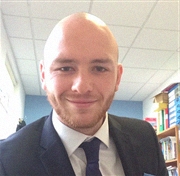Tutor HuntResources Special Needs Resources
It Takes Me Half A Bottle Of Whisky To Get Through One Of Your Assignments’: Exploring One Teacher Educator’s Personal Experiences Of Dyslexia
Analysis of one teachers view on Dyslexia
Date : 23/05/2017

Uploaded by : Giles
Uploaded on : 23/05/2017
Subject : Special Needs
It Takes Me Half a Bottle of Whisky to Get through One of Your
Assignments : Exploring One Teacher Educator s Personal Experiences of Dyslexia Throughout this article the author identifies the positive impacts
that surround the social model of disability and how this challenges the
barriers in which prevent individuals from reaching their full potential. With
the article being written and published in 2015, it offers a relatively recent
viewpoint from one of the teacher educator s perspective whilst also critically
examining more dated articles and viewpoints. This article in particular goes
on to show how different experiences can lead to the shaping of their
professional identities (Glazzard, J and Dale, K, 2015). Research has shown that the identification and subsequent
ownership of the dyslexia label are often viewed positively by those with
dyslexia (Glazzard and Dale, 2015, Glazzard, 2010, Riddik, 1995), however this
article does not reference the negative impacts of having a label and merely
offers a somewhat rose tinted view on the impacts of the social model of
disability. Yes, the label leads to the pupils realising that they are not
stupid or thick (Glazzard and Dale, 2015, Riddick, 1995), whereas it could be
argued that by having this label pupils can also be seen as stupid or thick
by society and this negative view is being addressed through the social model
of disability. The negative impacts and views by society are what can create a
threat to standards which can deter may trainee teachers from disclosing their
disability (Glazzard and Dale, 2015, Fuller et al, 2009). A main argument
created by the author therefore is, how the social model of disability can
create a shift from people feeling embarrassed or scared to disclose their
disabilities, but rather accept them and learn various ways in which their
disability can be managed so that they can help others. The author reaches a few key conclusions which offer room for
thought. A look into the performative culture (Glazzard and Dale, 2015, Ball,
2003) highlights an idea that the standards set by educational institutions and
the back to basics approach (Glazzard and Dale, 2015, DFE, 2013) create a
marginalization of dyslexic students who are already stumbling in trying to reach
the marks required to progress in life. It is evident that unless there is a
change in societies thinking and views on dyslexic students then little
progress can be made in how students can overcome difficulties due to their
disabilities. Teachers with dyslexia however can often contribute a lot more to
classes and have an out of the box way of thinking which can help individuals
with dyslexia thrive and help those without impairments to think in a different
way. This also raises the point that Schools which do not use inclusive
practices for both the staff and the students are not inclusive schools
(Glazzard and Dale, 2015). So with societies views and impossible standards
being set it leaves the question how can the social model eradicate potential barriers
to academic achievement? . In hindsight how can society accept and cater for disabilities when
there is no statutory obligation for providers to offer training in special
educational needs practices? (Glazzard and Dale, 2015). Schools colleges and
higher education institutions have to be able to demonstrate that adjustments
have been made to enable students with disabilities to achieve their full
educational potential however this equality act fails to distinguish different
disabilities and does not go on to mention how Schools or colleges can go
about abiding by this act. In many state run schools children are often left to
their own devices when studying and this can lead to many children shrinking
into the background and their difficulties not being picked up. To be classed
as disabled the student needs to be able to take various tests and these take
time and money, money which more often than not is unavailable for various
reasons. So from this argument how can schools claim to be abiding by the
Equality Act and how can this article illustrate positive impacts of the
social model of disability as this only argues for the children which have been
classed as disabled and not been left to feel as if they are stupid . Within the article it states that people with impairments are
disabled/excluded by a society that is not organised in ways that take account
of their needs (Glazzard and Dale, 2015, Tregaskis, 2002, p.458), this leaves
the view that disability is created by physical and social barriers in society
which leads to limitation or loss of opportunity (Glazzard and Dale, 2015,
Barnes, 1991). It can be argued, however that this creates a blame culture
and gives children with disabilities a chance to use their title of
disability as a reason to not do what they have the ability to do. It opens
up a slippery slope if a child decides they can t do something (which is often
the case with children suffering with a disability like dyslexia) and allows
the children to blame, instead of try to overcome the issues they are faced
with.
This resource was uploaded by: Giles
Other articles by this author

